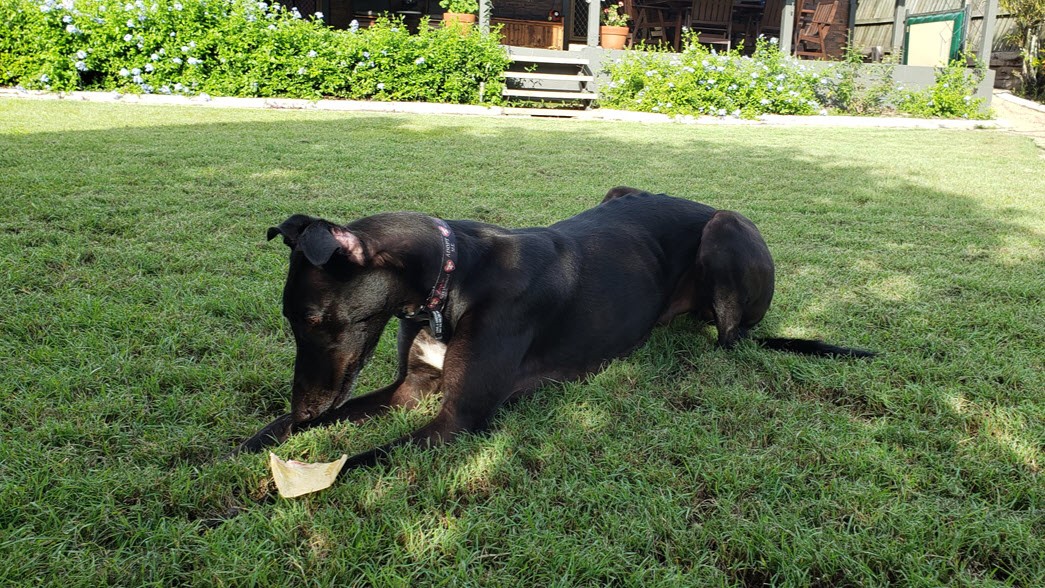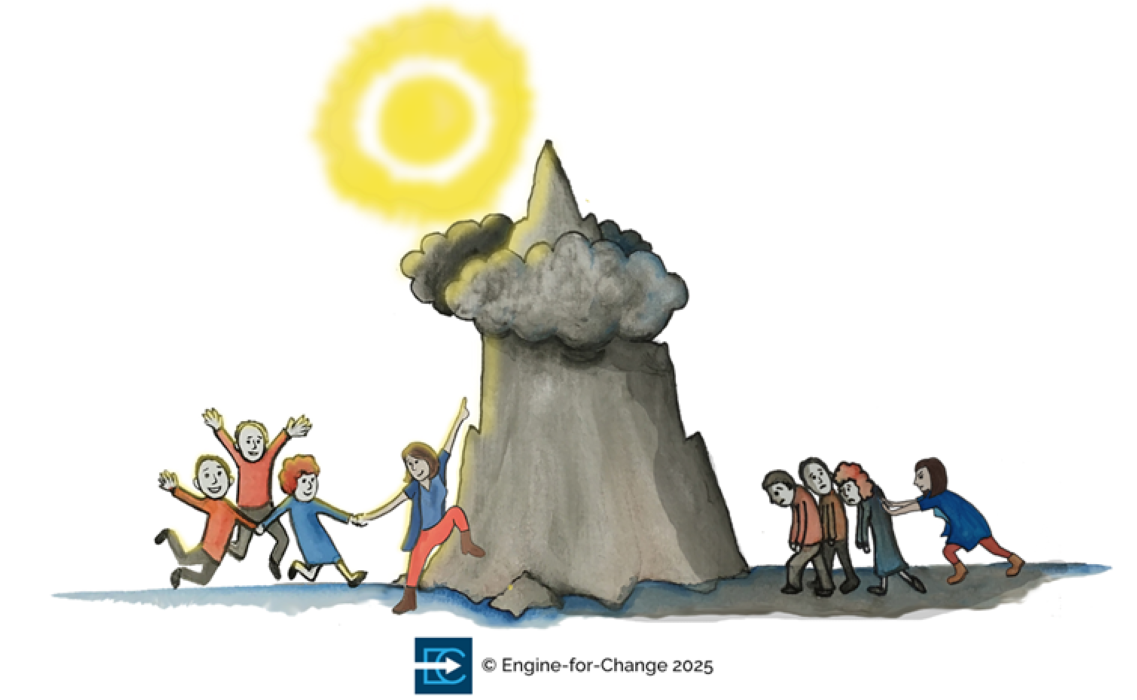You Are Not A Dog: The First Rule in Canine Change Management
When Roo, the rescued greyhound, first arrived in my home to be fostered through his transition from racing dog to pet, I had one mission: give him the best experience of being a pet, with lashings of love and attention. I envisioned giving him the freedom to explore every nook and cranny of the house, thinking that this would help him feel welcomed and at ease. It’s a charming idea—one that makes sense to us humans. But as it turns out, Roo wasn’t interested in my charming idea. In fact, it was the opposite of what he needed. This was my first lesson in canine change management, and it got me thinking about a crucial concept in our profession: just because something feels right to us doesn’t mean it’s right for those we’re supporting through change.
In my current role as Chief Knowledge Officer for the Change Management Review, one of my interests is how the knowledge base of our profession can evolve by drawing on the real-life experiences of practitioners. This isn’t about simply collecting new strategies or tools; it’s about deepening our understanding of the human condition—and yes, sometimes the canine condition. Roo’s story isn’t just a sweet anecdote; it’s a reminder of the rich insights that can be gained when we reflect on our own practices and consider how experiences from other domains can expand our professional philosophy.
Understanding Roo, the greyhound’s journey
Let me set the scene. Roo’s journey to my home was, to put it mildly, disorienting. Ten hours in an enclosed trailer with no view of the outside world, followed by a car ride through a bustling metropolis—likely his first time in a car, having previously only known the quiet of rural life. The poor guy must have felt like Dorothy landing in Oz. When Roo finally reached my home, what he needed most was a quiet, confined space to adjust. But here’s where it gets tricky: my instinct was to give him lots of attention and free rein of the house, thinking this would make him feel loved and liberated. Instead, it threatened to overwhelm him.
Before Roo arrived, we had been given valuable insights by the rescue charity coordinator, specific to Roo’s background. This, along with general knowledge about the life of a racing greyhound, painted a clear picture. Greyhounds, often known as “lazy dogs,” sleep most of the day, bred for speed rather than stamina. Their lives in kennels are all about maintaining peak racing form—no exploring, no energy-draining activities, nothing that might risk a slight injury. Imagine the contrast: from a life of regimented confinement to the open, uncharted freedom of a family home. It’s no wonder Roo might not know what to do with himself.
The disconnect when we project
Here’s the thing: we humans are great at projection. We see a dog that’s been confined, and we think, “Let’s set him free!” But Roo didn’t need freedom – at least not right away; what he needed most was familiarity. We tend to assume that others—whether dogs or humans—share our perspectives and desires. This is a common mistake. The rule of “You are not a dog” isn’t just a catchy phrase; it’s a critical reminder to step outside our own mindset and genuinely understand the unique needs of those we’re helping through change.
Initially, I wanted to compensate for all Roo had been through by giving him a thoughtful loving experience with free rein of the house and yard. In my mind, this was the epitome of kindness. But Roo, who had never had such freedom, would find that overwhelming. This experience was a powerful reminder: Our well-intentioned actions can sometimes cause more harm than good if we don’t take the time to truly understand the other’s experience.
Lessons from canine change management
The more we learned about Roo’s past, the more our empathy for his situation grew. And as our empathy deepened, so did our understanding of how to support him. For example, when we took Roo to a fur-friendly Farmers Market, we knew his past life meant he hadn’t had the experience of most dogs in being able to soak up the sights and scents of new places. This would be entirely new territory – literally and figuratively – for him. We limited the visit to 20 minutes and made sure we had a safe space nearby for a quick retreat if needed. This delicate balance of introducing new experiences while providing a safety net is a lesson that translates directly into change management.
Here’s what Roo reminded me, in a nutshell:
- Empathy and Patience: Roo’s past was a lens through which we could anticipate his reactions. Similarly, understanding the history and experiences of those we support in change efforts is crucial. Patience isn’t just a virtue; it’s a necessity.
- Tailoring Support: Just as we tailored our approach to Roo’s specific needs, change managers must design their strategies to fit the unique circumstances of each individual or group. One-size-fits-all approaches? They don’t work for dogs, and they certainly don’t work for people.
A reflection on my philosophy of practice
Now, let’s zoom out a bit. What Roo’s experience offered me wasn’t just a practical lesson; it was an opportunity to reflect on my philosophy of practice. This concept isn’t new, and its common in other professionals like early childhood education. But it’s generally not considered or talked about in the change management discipline. A philosophy of practice is the set of beliefs and principles that guide one’s professional actions—often without us even realising it. We all have one, though it’s usually tacit and unexamined. But here’s the catch: it’s crucial to make this philosophy explicit, to bring it to the surface, and to question whether it serves us well in the roles we play—and the people we aim to help.
Roo’s transition prompted me take a renewed look at my own philosophy of practice. I asked myself: Do I really embody the empathy and patience I espouse? Or am I sometimes more focused on the outcome than the process? This reflection led to check my approach in various working relationships, aligning my actions more closely with the values I hold dear. It’s a process I encourage every professional practitioner to undertake.
Applying canine insights to change management practice
Zooming back in. I consider how the insights from my experience with Roo, would be applicable in change management work. In managing Roo’s transition, the concept of a “safe space” became critical. We created an environment where Roo could feel secure, even as we slowly introduced him to new experiences. This approach isn’t just for greyhounds; it’s for anyone navigating change. Safe spaces—both physical and psychological—are essential in any change process. They provide individuals with a retreat when the pressures of change become overwhelming, allowing them to build confidence and adapt at their own pace.
Roo’s reactions to new environments, like the crowded Farmers Market, underscored how past trauma and unfamiliarity can trigger resistance. By recognising these signs early, we were able to manage his exposure and prevent negative experiences. In a professional context, understanding the history of those affected by change allows for better anticipation of resistance and more effective strategies to address it.
Moreover, Roo’s gradual exploration of his new environment highlighted the importance of timing. Rushing the process could have caused more stress, just as pushing employees too quickly through change can lead to burnout and resistance. Recognising when to slow down, when to provide additional support, and when to give people space to breathe is a vital skill for any change manager.
Knowledge as a continuous journey
Reflecting on my experience with Roo has reinforced the importance of continuous learning and adaptation, which I consider in my role as Chief Knowledge Officer. Each experience, whether in fostering a dog or leading a team through change, offers valuable lessons that can inform and improve our practices. The insights gained from fostering Roo are just one example of how experiences outside the professional sphere can enrich a change manager’s knowledge base.
As practitioners, we must be open to the idea that our knowledge and philosophies of practice can and should evolve. By drawing on diverse life experiences, interacting with other disciplines, and reflecting on our own practices, we can expand our understanding and become more empathetic, adaptable, and effective in our roles.
The key takeaway from Roo’s story is that effective change management requires us to step outside our own experiences and assumptions. By truly understanding the unique needs of those we are supporting, and by consciously examining and aligning our philosophies of practice, we can create environments that foster successful transitions, whether for a greyhound finding his place in a new home or for employees navigating organizational change.
So, there you have it. Roo’s story isn’t just a cute tale of a dog adjusting to a new life—it’s a reminder that our professional practices are deeply intertwined with our personal experiences. And sometimes, it’s these unexpected moments that give us the opportunity to reflect, to challenge our assumptions, and to grow both personally and professionally. After all, while you are not a dog, the lessons you can learn from one might just make you a better change manager.







